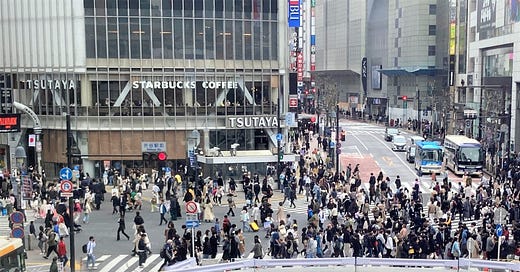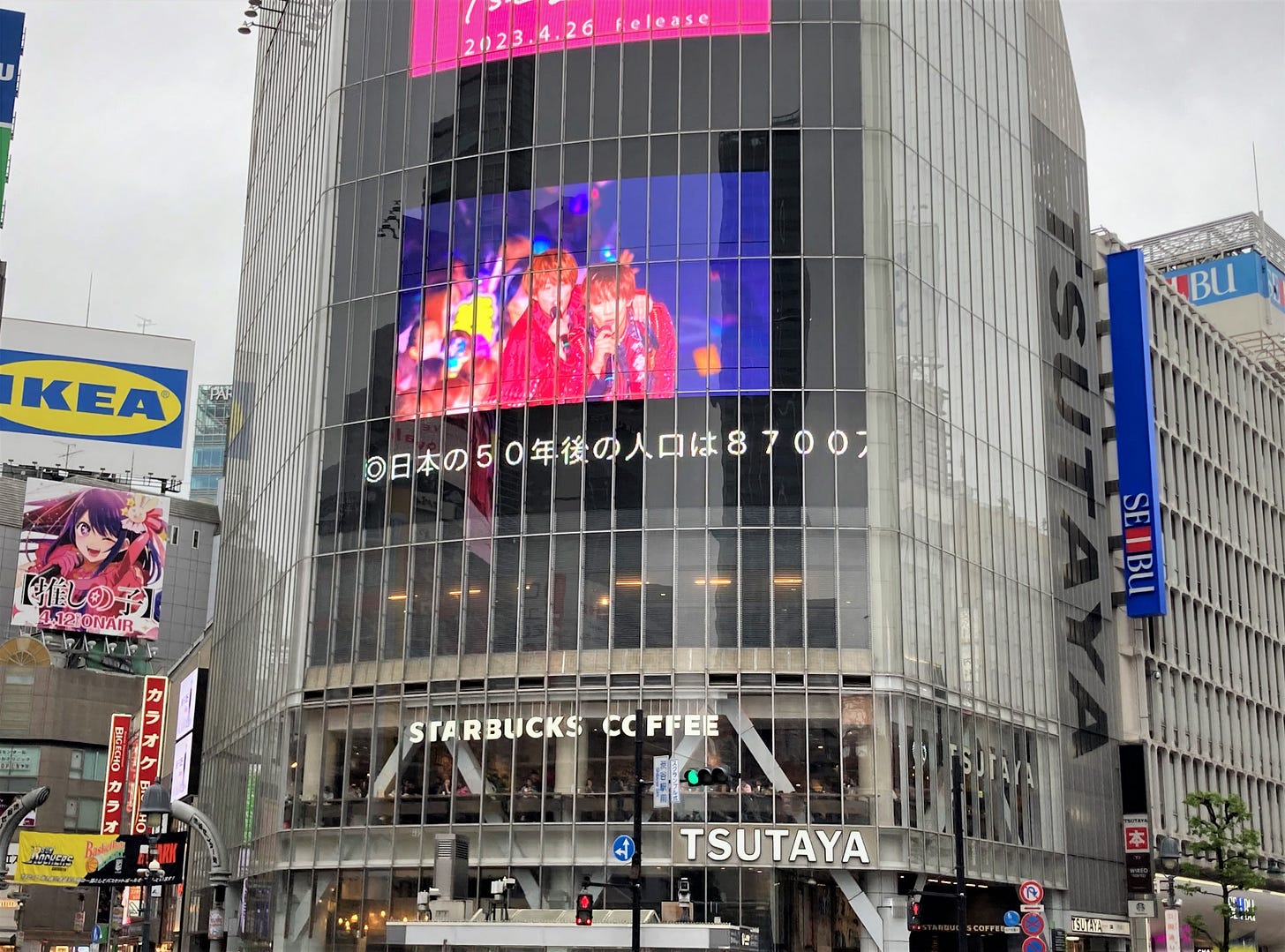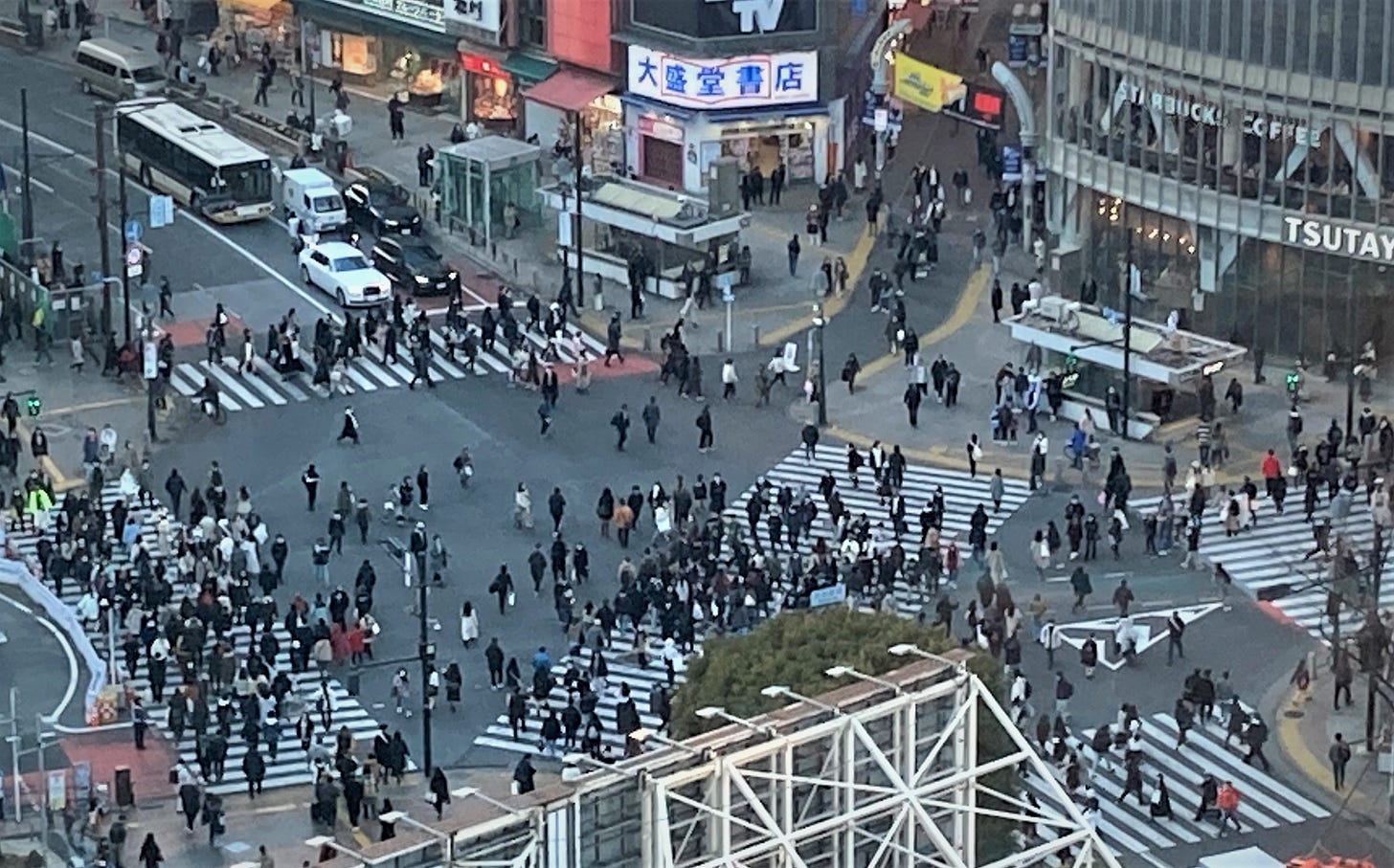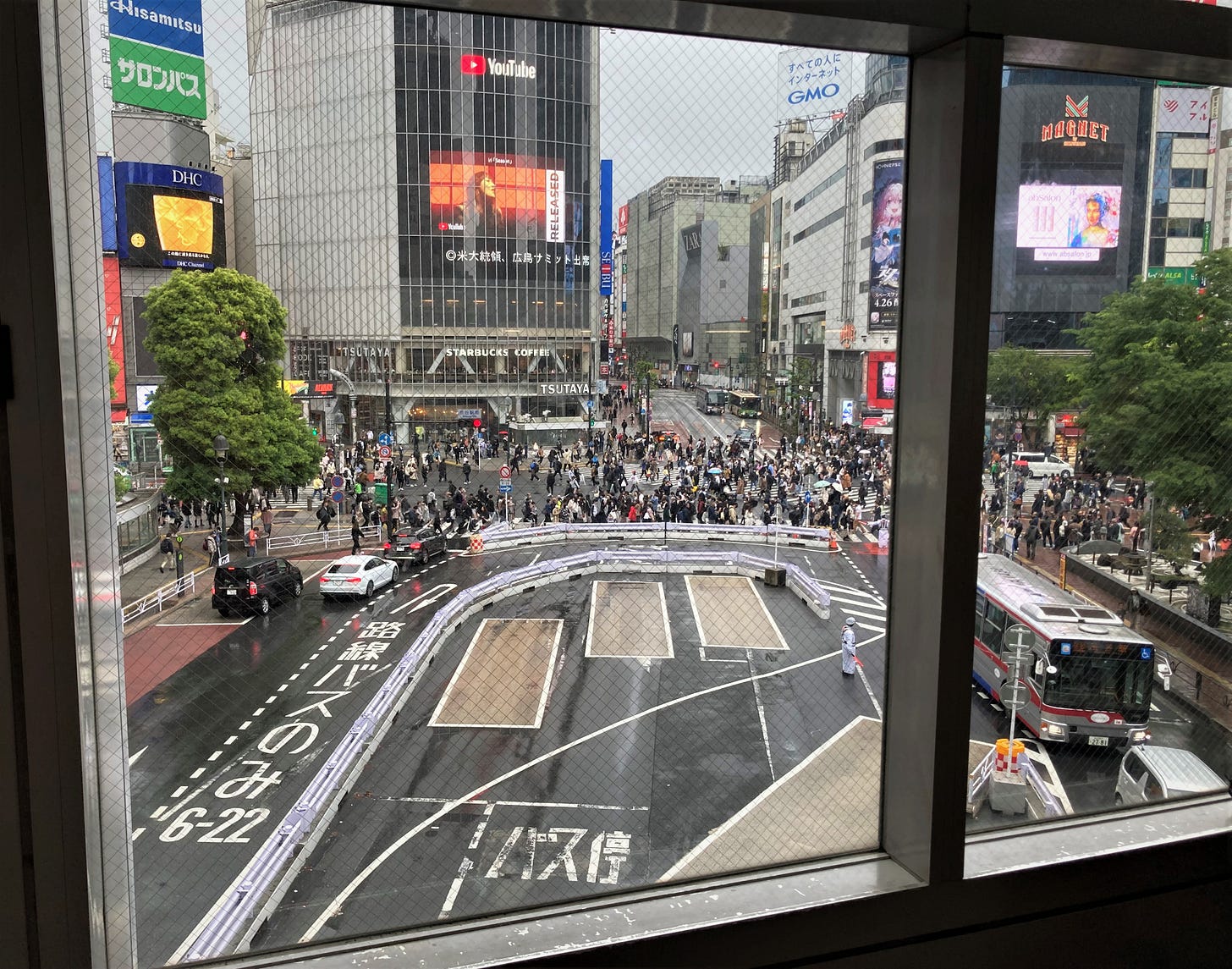Without a doubt, the scramble crossing in Shibuya called “Shibuya Crossing” is one of the most cherished tourist attractions among international visitors. This Tokyo district sees tens of thousands of people every day, with an estimated 3,000 crossing at any one time. I really can’t remember when this spot started its popularity, but for me, it is still an ordinary scramble crossing, but I have come to understand why it is so popular among foreign tourists. And I came to realize that there are several approaches to enjoy with the particular location of developing Shibuya. This week I will write about Shibuya Crossing with a few different aspects. I hope this post will help you enjoy Shibuya Crossing more.
Three major sub-center in Tokyo
Shibuya has long played an important role as one of the three major sub-centres, along with Shinjuku and Ikebukuro.
Shinjuku was developed first as a terminal station to western Tokyo and then with the relocation of the Tokyo Metropolitan Government Office.
Ikebukuro is an important terminal station to Saitama, with a less secularized Chinatown at its west exit and an otaku culture popular with women.
What about Shibuya? Shibuya has always been a town that has attracted attention as a leader in the fashion and culture of the times. Shibuya 109 is a symbolic spot of this, and looking at the ongoing, once-in-a-century large-scale redevelopment, no one can deny its future potential from the perspective of foreign visitors.
Redevelopment of Shibuya
The ongoing large-scale redevelopment of various parts of the area, not only in Shibuya Crossing but also in other parts of the city, has considerably complicated the traffic routes around Shibuya Station and other areas.
The redevelopment of Shibuya station consists of nine projects, which are expected to be completed in 2027 according to plans. The east-west movement across JR Shibuya Station, which is currently like a maze, and the traffic lines from the Tokyo Metro Ginza Line, which was completed a step earlier, are making travellers visiting the area for the first time weeping.
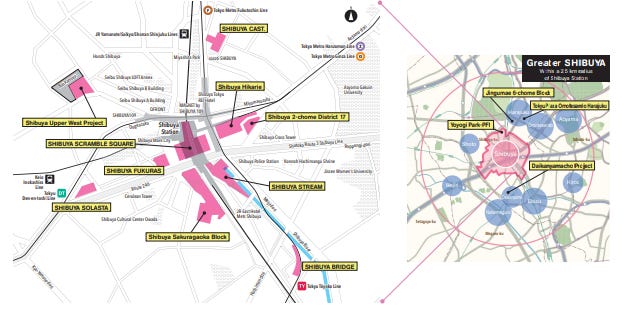
This situation can be seen very well in Shibuya Scramble Square. Shibuya Scramble Square, with its open-air rooftop space called 'Shibuya Sky', the highest in the Shibuya area and one of the largest in Japan at 230 metres above ground level, is a prime example of this.
Why is it so popular?
It is an iconic symbol of Japan's bustling urban culture. The Crossing is a colorful and vibrant spectacle that represents Japan's cutting-edge fashion, hip-hop culture, and nightlife. The sheer scale of the intersection is impressive, as it has been estimated that up to nearly 3,000 people cross during every signal change. Moreover, the name spread abroad through music videos and films about Shibuya Crossing. Here are some examples
<Movies>
Lost in Translation (2003)
Fast and Furious: Tokyo Drift (2006)
Resident Evil: Afterlife (2010)
The Wolverine (2013)
The Ramen Girl (2008)
Best time for the observation
Let’s come back to Shibuya Crossing. When visiting Shibuya Crossing, there are some important factors to consider.
Weather: avoid rainy days as the number of people crossing the street increases, along with the use of umbrellas, which can spoil the experience.
Weekends: Weekends see an upsurge in pedestrian traffic, making it an excellent time to witness the spectacle of the crossing.
Evening: The evening is another good time to visit, especially during the rush hour when many businesspeople and students are going home.
Live Camera: There are two major Live camera options to observe Shibuya Crossing operated by TV stations; Prime Online(Fuji TV) from a high angle and Nippon TV from Starbucks.
Where to observe?
There are many aspects of the observation locations regarding Shibuya Crossing. You will miss the greater part of it if you are just standing in the middle of the crossing and taking photos.
Duration of crossing time: Duration may be varied, but it was roughly 45 seconds when I checked the duration the other day at the weekend. It is enough to take a video, but you have to do it several times. Due to the nature of the scramble crossing, you have to wait for quite a while for the next pedestrian time. However, this creates the phenomenon of a large number of pedestrians walking in unison.
Starbucks: The best observation location of Shibuya Crossing is Starbucks Shibuya Tsutaya Branch. But it's hard to nab the coveted window seats.
Shibuya Sky: Shibuya Sky is another recommended spot, although it's a bit on the expensive side.
Now I have three locations from different angles which you can finish in 45 minutes of observation.
12th floor of Shibuya Scramble Square: There is a resting area on this floor with huge windows. You can look down the crossing. If you don’t want to pay for Shibuya Sky, this location should be more than enough. Please be advised that you’d better use escalators since lifts are always busy.
Keio Inokashira Line corridor: You can observe people crossing from a relatively high location and the side. You can reach there from the exit of the Tokyo Metro Ginza Line to the entrance of the Keio Inokashira Line. It takes about 5 minutes from the exit.
Shibuya Crossing: After the corridor, you can get down to the ground in a few minutes. Enjoy the observation.
Please comment on what appeals to you about Shibuya Crossing, if you can. You may find a different perspective from the one I have in mind.
Please note that due to a business trip to Pakistan during May and June, this newsletter may be sent irregularly.

